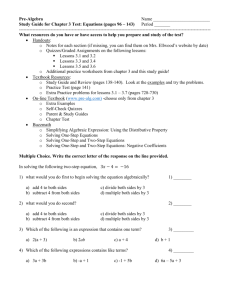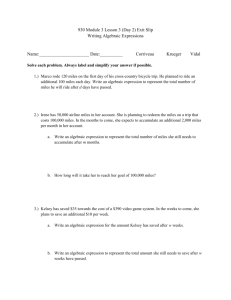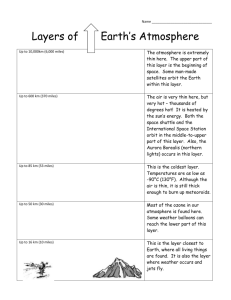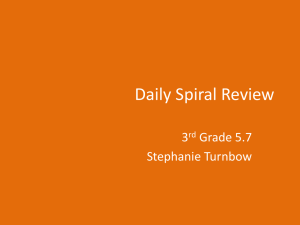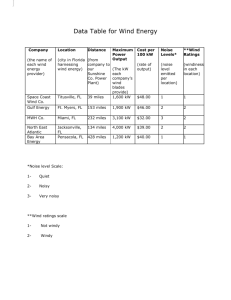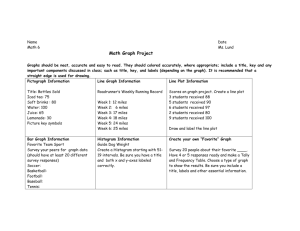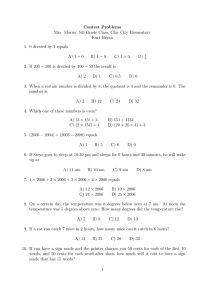3.0A.D.8
advertisement
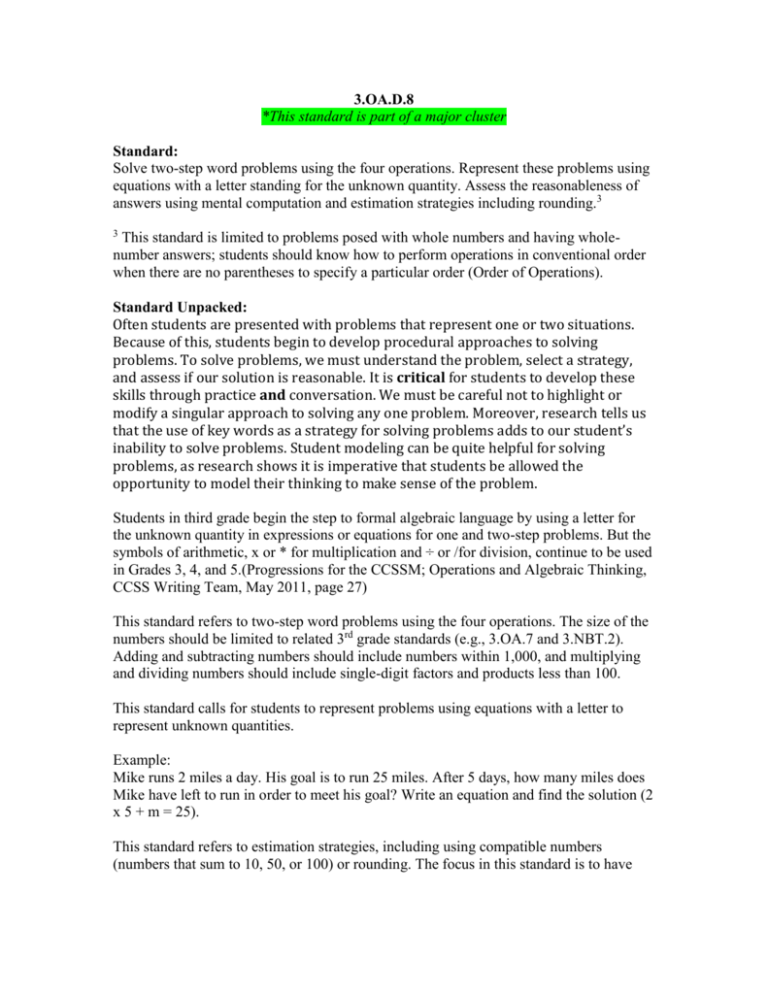
3.OA.D.8 *This standard is part of a major cluster Standard: Solve two-step word problems using the four operations. Represent these problems using equations with a letter standing for the unknown quantity. Assess the reasonableness of answers using mental computation and estimation strategies including rounding.3 3 This standard is limited to problems posed with whole numbers and having wholenumber answers; students should know how to perform operations in conventional order when there are no parentheses to specify a particular order (Order of Operations). Standard Unpacked: Often students are presented with problems that represent one or two situations. Because of this, students begin to develop procedural approaches to solving problems. To solve problems, we must understand the problem, select a strategy, and assess if our solution is reasonable. It is critical for students to develop these skills through practice and conversation. We must be careful not to highlight or modify a singular approach to solving any one problem. Moreover, research tells us that the use of key words as a strategy for solving problems adds to our student’s inability to solve problems. Student modeling can be quite helpful for solving problems, as research shows it is imperative that students be allowed the opportunity to model their thinking to make sense of the problem. Students in third grade begin the step to formal algebraic language by using a letter for the unknown quantity in expressions or equations for one and two-step problems. But the symbols of arithmetic, x or * for multiplication and ÷ or /for division, continue to be used in Grades 3, 4, and 5.(Progressions for the CCSSM; Operations and Algebraic Thinking, CCSS Writing Team, May 2011, page 27) This standard refers to two-step word problems using the four operations. The size of the numbers should be limited to related 3rd grade standards (e.g., 3.OA.7 and 3.NBT.2). Adding and subtracting numbers should include numbers within 1,000, and multiplying and dividing numbers should include single-digit factors and products less than 100. This standard calls for students to represent problems using equations with a letter to represent unknown quantities. Example: Mike runs 2 miles a day. His goal is to run 25 miles. After 5 days, how many miles does Mike have left to run in order to meet his goal? Write an equation and find the solution (2 x 5 + m = 25). This standard refers to estimation strategies, including using compatible numbers (numbers that sum to 10, 50, or 100) or rounding. The focus in this standard is to have students use and discuss various strategies. Students should estimate during problem solving, and then revisit their estimate to check for reasonableness. Example: Here are some typical estimation strategies for the problem: On a vacation, your family travels 267 miles on the first day, 194 miles on the second day and 34 miles on the third day. How many total miles did they travel? Questions to check for understanding and increase the rigor: About how many days have you been in school? Tell how you estimated and what mathematical operations you used. Ben has three cats. Each cat eats one can of wet cat food per day. Cat food is sold with 24 cans in a case. Ben wants to buy enough cat food for three weeks. If he buys one case is this enough cat food? Explain your answer. The answer is 48. What is the question? There are 51 third-grade students in Amy’s school. 19 of the them are in the library. How many are left in their classrooms? If each classroom holds about 20 students, how many classrooms are likely being used? Andrea had some markers. When she puts them in groups of 3, there was 1 left over. When she put them in groups of 4, there were 3 left over. If she had fewer than 20 markers, how many could she have had?


